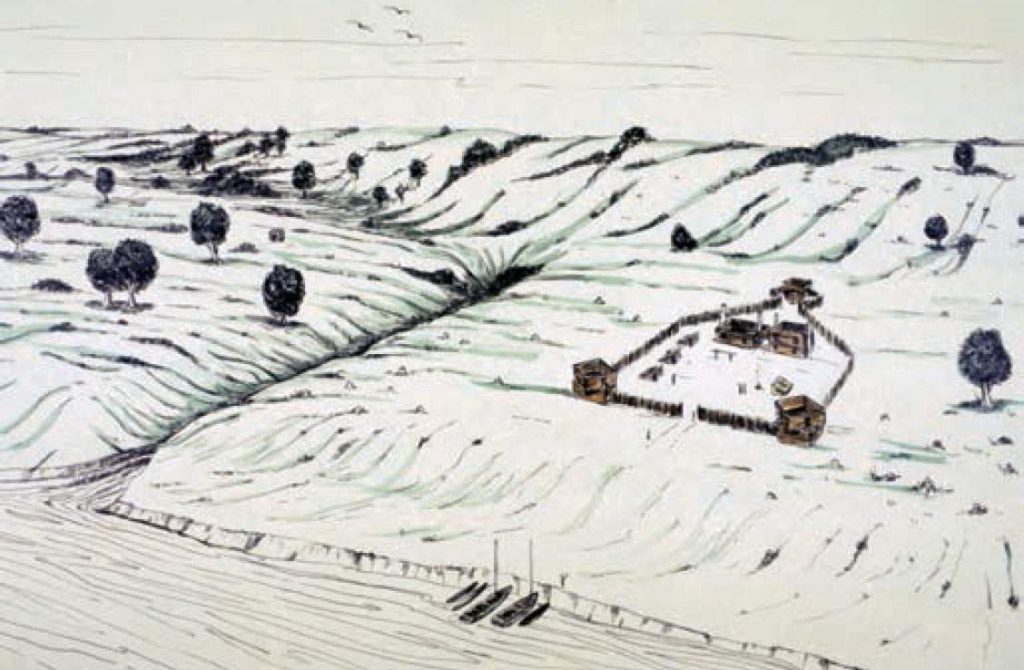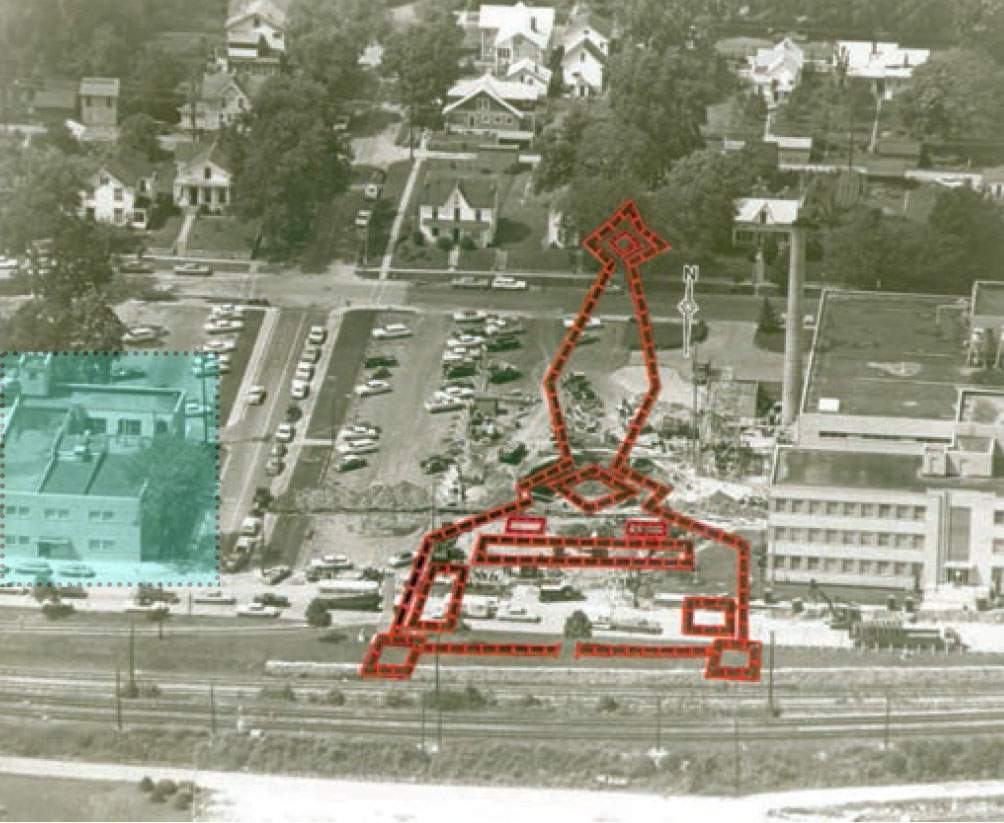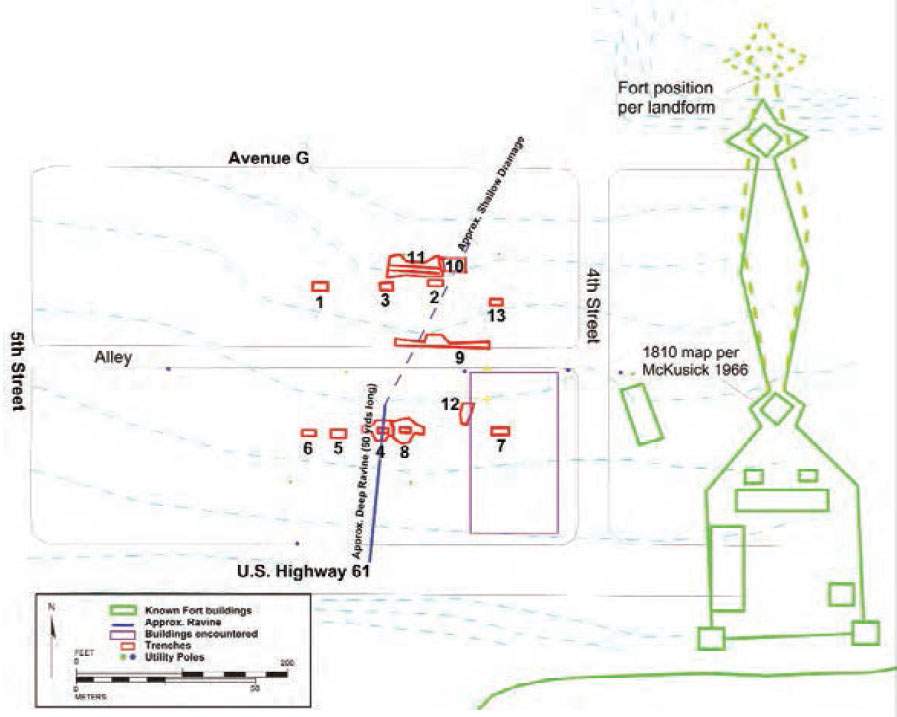Fort Madison battlefield only Iowa location where U.S. troops died defending country
City leaders in Fort Madison have agreed to split a plot of land they know to be historic. While dividing the parcel does not immediately endanger further investigation or preservation of the site, it does clear the way for a section of the property to be developed by Minnesota-based RSBR Investments L.L.C. as a Dollar General Store.
If this retail development is allowed to move forward, Iowa and the nation will likely lose a significant segment of history forever.
The land in question is currently a dilapidated parking lot, owned by Holy Trinity Catholic Schools, that previously served Sheaffer Pen Co. It is situated just blocks from the Mississippi River and bordered by U.S. Hwy 61 (Avenue H locally), 4th and 5th streets and Avenue G, with an alleyway dividing it into northern and southern sections.

Council members voted on Aug. 5 to divide the property into eastern and western sections. Developers are interested in building in the newly established western portion of the site.
More than 200 years ago, before the State of Iowa was founded and when U.S. troops occupied a newly established Fort Madison, the land in question was rife with conflict and fraught with danger as European, Native American and national interests battled for control of trade routes and Louisiana Purchase lands.
The original footprint of Fort Madison (not the replica open for tours) is to the land’s east. When the battles of the War of 1812 were fought, a ravine dissected the land before emptying into the Mississippi. It was the strategic combat use of this ravine by Native Americans that ultimately led to the abandonment and demise of Fort Madison.
The inability of the U.S. to hold Fort Madison shaped not only the War of 1812 Western Theater, which remained under British influence until 1815, but allowed a continuous and dominant native presence west of the Mississippi that shaped the country for at least another two decades.
For these reasons, historians and preservationists refer to the property as Black Hawk’s Ravine, in memory of the fierce Sauk chief who planned and possibly led the battles that drove the U.S. forces out.
Fighters were lost on both sides of the conflict and at least 16 U.S. soldiers are buried at the Fort Madison site, although it is unknown exactly where. Included in this total are men who represent the only U.S. troops to die on Iowa soil while defending the nation. There is no record of the number of Native Americans who lost their lives on this battlefield.
HISTORIC IMPORTANCE

Fort Madison, originally known as Fort Bellevue, was built by the U.S. Army in 1808 and abandoned in 1813. It’s historic significance is unquestioned for many reasons.
• It was the first U.S. fort on the Upper Mississippi River.
• It was the location of the only War of 1812 battle west of the Mississippi.
• It was the location where Black Hawk rose to prominence.
• It was the location of the only real military battle in Iowa in any U.S. conflict.
• It is home to the oldest U.S. military cemetery in the region.
• It holds great symbolic meaning to Native Americans, especially the Meskwaki and Sauk.
• It is well preserved, all things considered.


While residents long knew the rough location of the original fort, which was set afire by fleeing soldiers, it wasn’t until 1965, when property owner Sheaffer Pen wanted to build a water line, that the footprint of the fort was unearthed. The Iowa State Archaeologist’s Office was asked to excavate the new utility line after the initial discovery was made and historians learned the fort was deeply buried under silt and largely intact.
In the 1970s, Sheaffer Pen sponsored successful efforts to have the site placed on the National Register of Historic Places. When the property was later sold to a Connecticut-based company, collaboration on preservation of the site faltered. When that company resold the property in 2007, it was unclear if the new owner knew about the fort or its historical significance.
There have been localized pushes throughout the years for the property to be purchased by some preservation group or another. And, despite the fact that the site is on the National Register, there is no legal way to force someone to preserve it.
Committed community leaders, however, should not shirk preservation responsibilities or shortchange current and future residents. Retail development, unlike this land and the blood and artifacts it holds, can be relocated. Even as the town plat shifts during the next 500 or 1,000 years, Iowans will never have another Black Hawk’s Ravine.
It was only a few years ago, thanks to small-scale sample excavations conducted by state archaeologists, preservationists and community leaders, that the battlefield site was first unearthed and some of its contents revealed. Today, nearly 90 percent of what lies below the surface remains unknown.
Preliminary findings have indicated the area on the western portion of the lot, where retail development has been proposed, will likely not bear the scope or number of Fort-era artifacts anticipated on the eastern side of the ravine. But they’ve also noted that this area could hold much more early town history, based on sample excavation findings. Is this history worth so little to town leaders that it can be skidded away in exchange for inexpensive knickknacks manufactured overseas? Out of sight, out of mind, I guess.
All Americans, perhaps especially Native Americans, deserve an opportunity to discover and learn from what may exist at Black Hawk’s Ravine. Iowans deserve an opportunity to visit Fort Madison and stand in the spot where others fought and died in an effort to build our nation. Those who gave their lives at Black Hawk’s Ravine deserve our dignity and respect. Their sacrifice was not for low, low prices.
If the thought of retail development next to the hill where Herbert and Lou Henry Hoover rest is appalling to Iowans, they should be equally disgusted with the possibility of such development once again overshadowing the resting places of U.S. Army privates Nicholas Tracy, John King, Daniel O’Flanagan, James Moore, James Leonard, John Cox, Samuel Heritage, John Minard, Thomas Sampson, Thomas Faulkner, John Bowers, John Ritts, William Elsey, Robert Dougherty, (Unknown) Pointer and all other yet to be discovered remains surrounding the fort and battlefield.
Fort Madison leaders should market and, if need be, subsidize another location for the retailer. State leaders should purchase and preserve the property but, if they don’t, citizens should fund a non-profit that will.
This column by Lynda Waddington originally published in The Gazette on Aug. 17, 2014.
